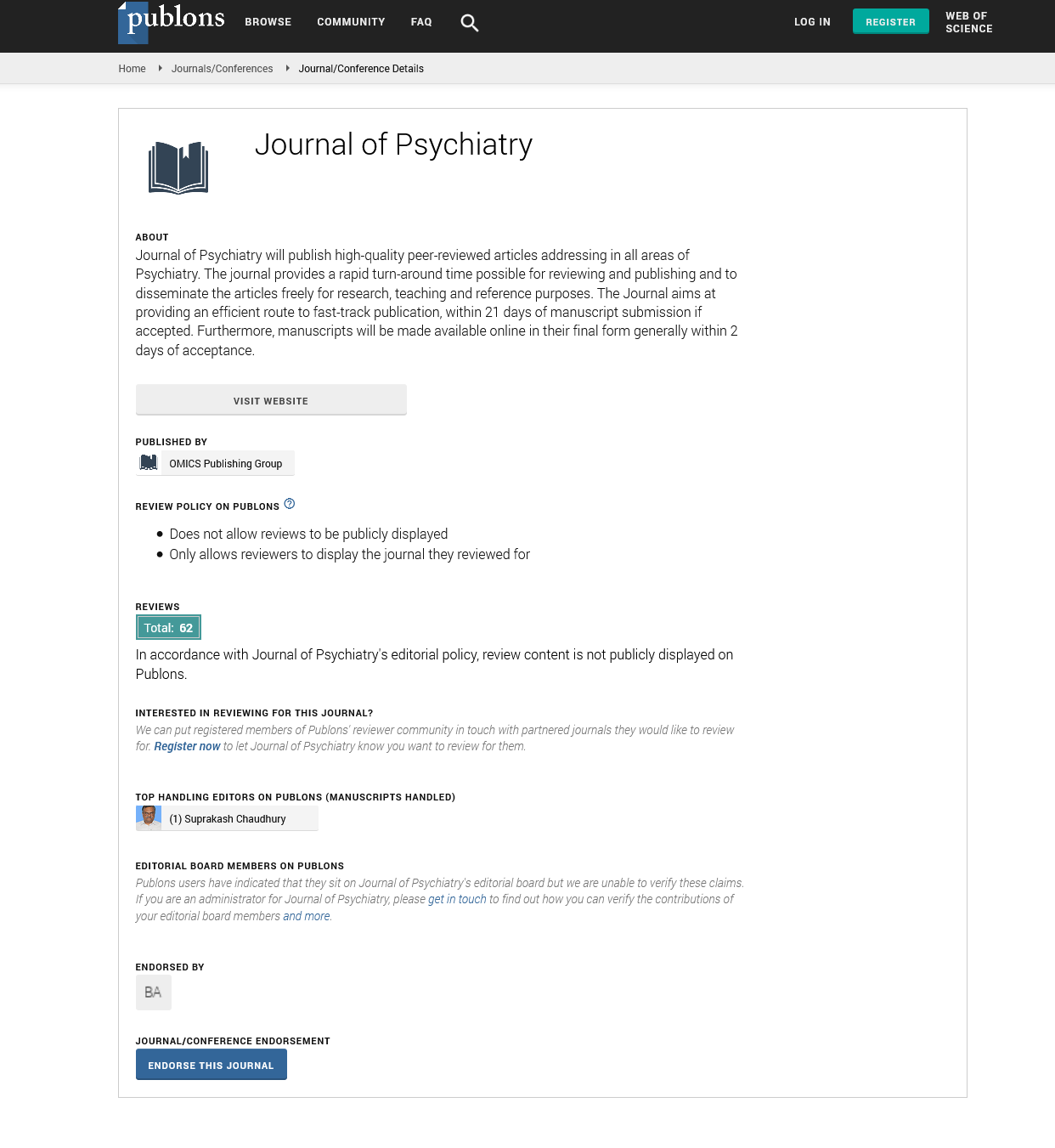PMC/PubMed Indexed Articles
Indexed In
- RefSeek
- Hamdard University
- EBSCO A-Z
- OCLC- WorldCat
- SWB online catalog
- Publons
- International committee of medical journals editors (ICMJE)
- Geneva Foundation for Medical Education and Research
Useful Links
Share This Page
Open Access Journals
- Agri and Aquaculture
- Biochemistry
- Bioinformatics & Systems Biology
- Business & Management
- Chemistry
- Clinical Sciences
- Engineering
- Food & Nutrition
- General Science
- Genetics & Molecular Biology
- Immunology & Microbiology
- Medical Sciences
- Neuroscience & Psychology
- Nursing & Health Care
- Pharmaceutical Sciences
Neurotrophic evidence of inflammatory polyneuropathies in peri-COVID-19 circumstances and their relationship with acute disease severity and inflammatory storm
International Summit on Psychiatry and Psychology - July 25, 2022 | Webinar
July 25, 2022 | Webinar
Nareen H. Hasrat
University Basrah, Iraq
Scientific Tracks Abstracts: J Psychiatry
Abstract:
Recently, there has been increasing evidence among people infected with coronavirus disease 2019 (COVID- 19) of being diagnosed with the typical acute postinfectious inflammatory polyneuroradiculopathy that was formerly known as Guillain-Barré syndrome (GBS), and it is not uncommon that some of them develop chronic inflammatory demyelinating polyneuroradiculopathy (CIDP). However, there is still a large debate and controversy about the link between COVID-19 and polyneuropathy. As a result, a multicentric retrospective cohort study was conducted in Basrah Governorate in the south of Iraq that included 2240 patients over a period of six months. Of those, 1344 patients had a history of COVID-19 in the previous year, and 1.14% of them developed inflammatory polyneuropathy, while only 0.29% (896 patients) of those with no history of COVID-19 had developed inflammatory polyneuropathy. This difference is highly significant, with a relative risk equal to six. The majority of the inflammatory polyneuropathy (44.4%) was diagnosed four to 12 weeks after the COVID-19 infection, with GBS being the most common type (72.2% of cases). Moreover, the nerve conduction velocity, the distal latency, and the amplitude of the most studied nerves were slower, more prolonged, and lower, respectively, among the COVID-19 groups compared with the non- COVID-19 group. Furthermore, there is an inverse correlation between the nerve conduction velocity in the majority of studied nerves and certain inflammatory biomarkers, such as serum ferritin, interleukin-6, and c-reactive protein. Although the occurrence of inflammatory polyneuropathy is more common among the less severe groups of COVID-19, if it occurs in the severe groups, it shows a more aggressive presentation. We recommend active surveying and maybe screening programs for those who recovered from COVID-19 and developed neurological symptoms, as well as increasing doctors' and patients’ awareness about these disorders and not referring to the fatigue and walking difficulties as trivial post-COVID-19 manifestations.
Biography :
Nareen H. Hasrat is a neurophysiology resident at the Basrah Health Directorate and a medical physiology master student in the College of Medicine—University of Basrah. She is working in the EMG and nerve conduction studies clinic in Basrah, southern Iraq. This research is a retrospective cohort study that aims to evaluate the prevalence and characteristics of inflammatory polyneuropathy during the COVID-19 era. It is actually part of her master's dissertation that she is currently working on and aims to evaluate the neurophysiological changes by EMG and NCS among patients with COVID-19 infection. Nareen is a medical doctor licenced to work in Iraq since 2017, and her main research interests are in the fields of neurology and neurophysiology. Her work is done under the supervision of Assistant professor Dr. Haithem J. Kadhum, "Medical physiology specialist," and professor Dr. Ali R. Hashim, "Consultant physician and neurologist," as well as Dr. Zaineb A. Yaqoob, Neurophysiology specialist.

